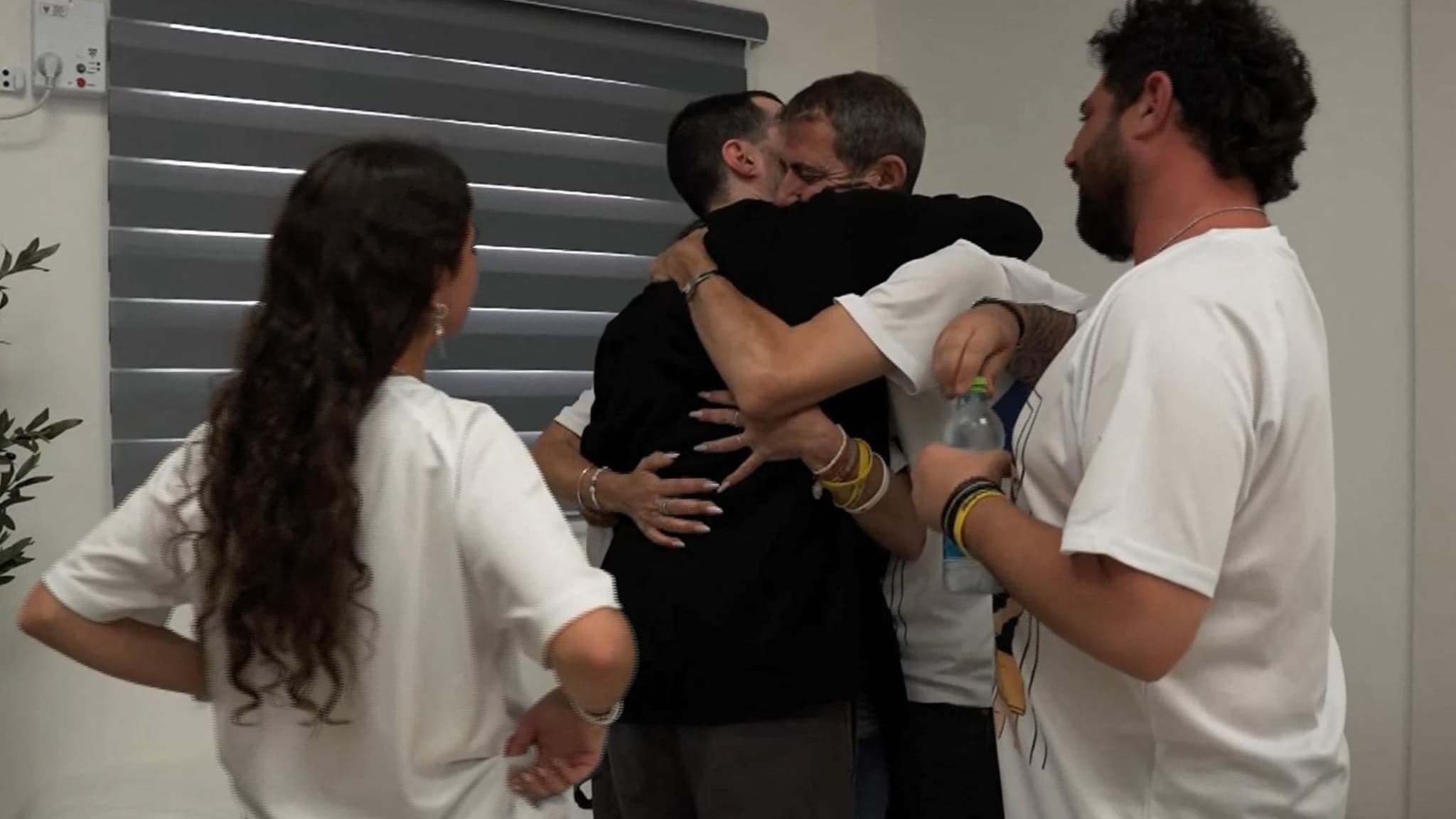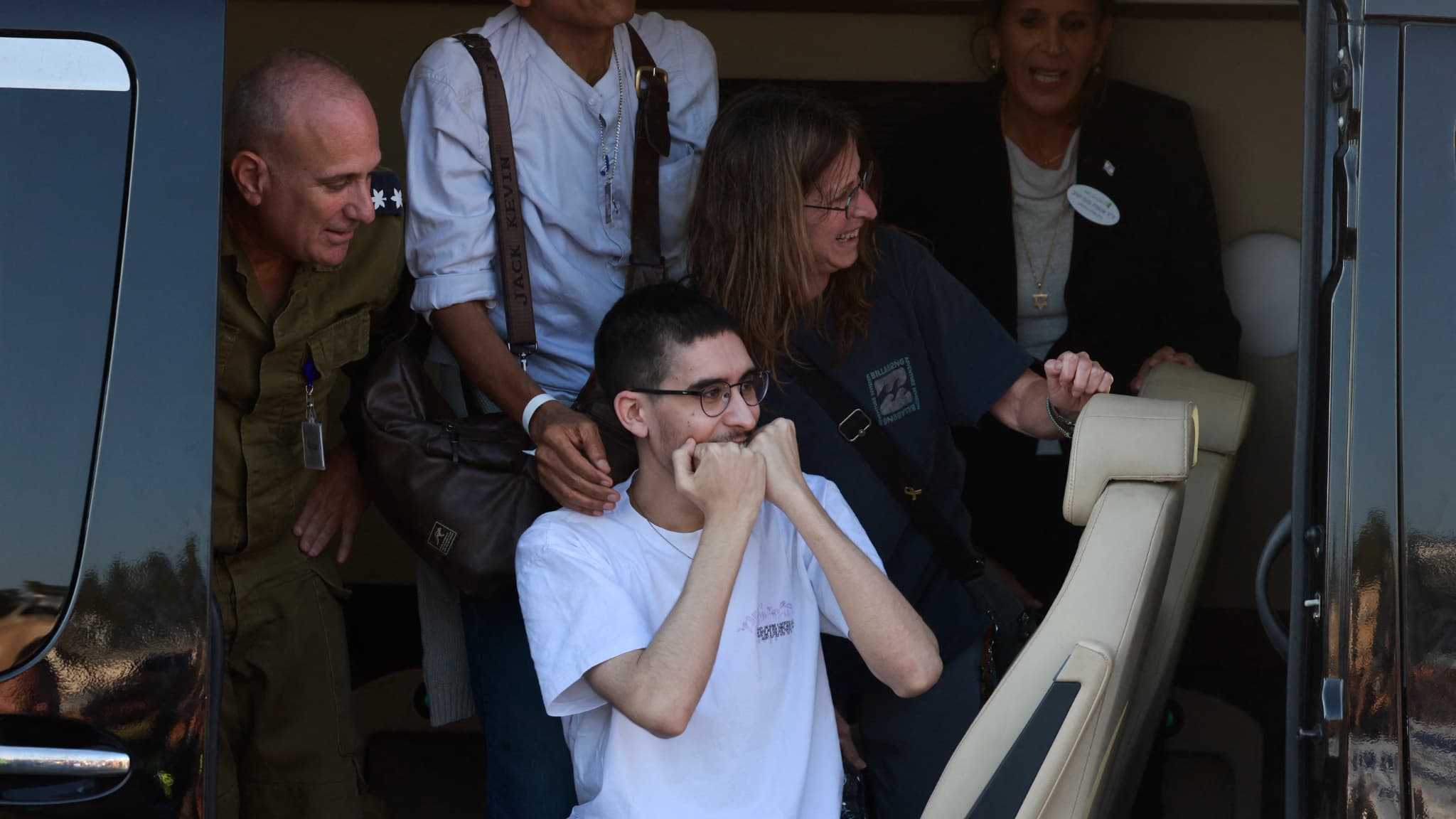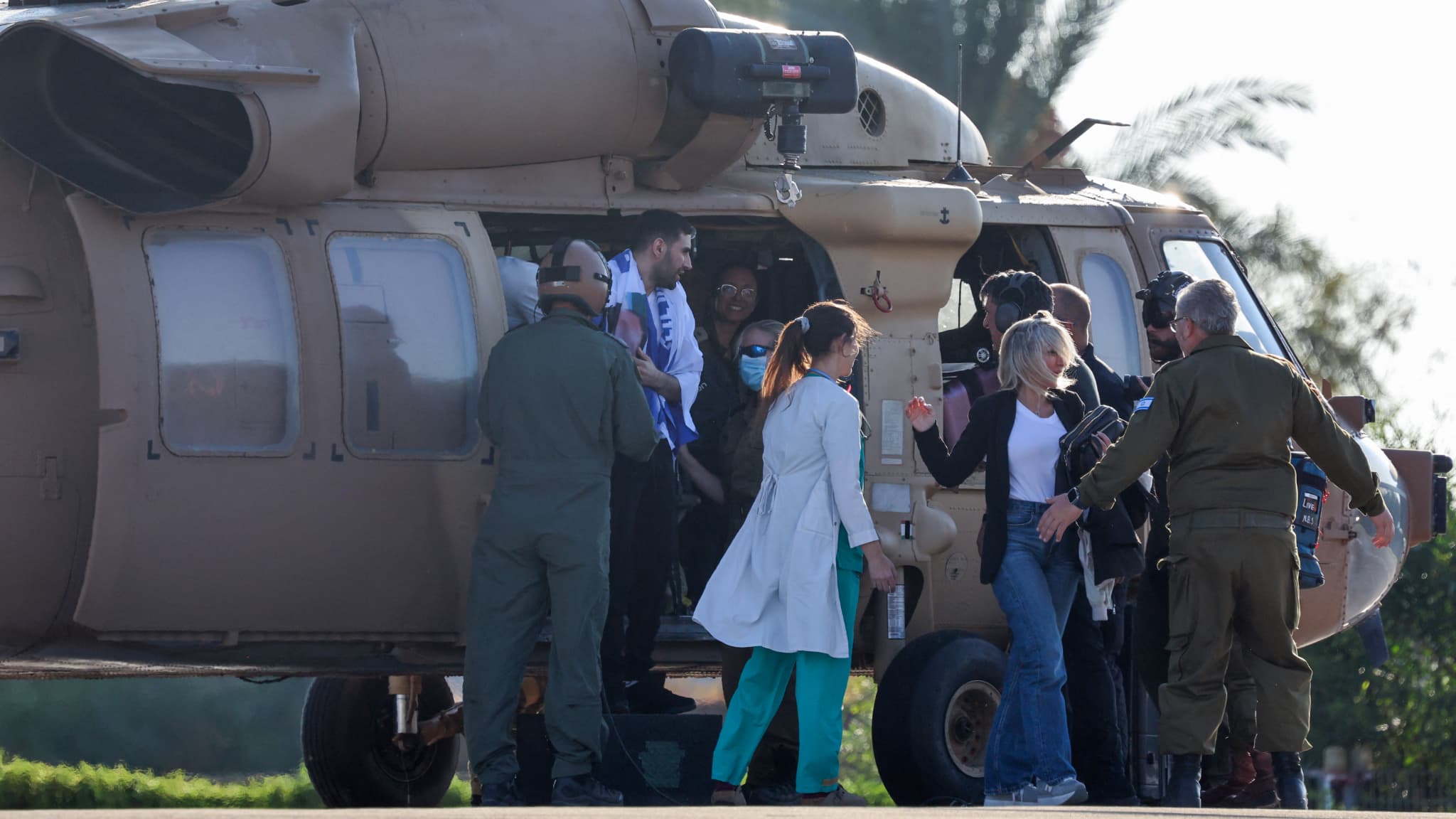“Welcome home.” In Tel Aviv’s Hostage Square, scenes of joy that brought together thousands of people welcomed the last 20 living hostages kidnapped on October 7 by Hamas.
After 738 days of captivity, a first group of seven hostages was handed over this Monday to the International Committee of the Red Cross, then another of 13 hostages, as part of the first stage of Donald Trump’s peace plan.
“Restore a sense of security”
All the hostages were taken by the Red Cross to a specially prepared Israeli army unit. The teams that established the first contact “are specialists in the psychological field and in creating a sense of security,” explains the Israeli coordinator for hostages and missing persons, Gal Hirsch, to Ynetnews.
“This is a very important step: above all, we make sure to give them the feeling that they are safe. Many of them are extremely disoriented,” says Dr. Cathy Lawi, traumatologist and director of the Paris Match NGO Emotion Aid.
A helicopter was prepared in the Gaza Strip for emergency transfer to the Beersheba hospital for the most serious cases. The other hostages were transferred to the Réïm military base. Each of them was received in a separate room to carry out a first medical examination. Afterwards, they were able to hug their closest family members who were waiting for them.

“The goal is to reestablish anchoring bonds, because connection with others is often what allows us to stay alive after such an extreme trauma,” emphasizes Cathy Lawi.
The hostages were then taken by air force helicopter to one of three hospitals in Tel Aviv, Sheba, Ichilov and Rabin-Beilinson, chosen to house former Hamas captives.

“Cozy” rooms, a dedicated medical team…
Once inside the hospital, the reconstruction begins. Both physical and psychological. “Captive medicine does not exist, we are inventing it,” Dr Michal Steinman of the Rabin Medical Center told the BBC. However, the country has learned from the two previous waves of hostage repatriation, in November 2023 and then last January.
In each hospital, rooms have been specially designed for their reception. Each hostage will remain in a “safe room, a completely closed space reserved for the family and the medical team” responsible, declares coordinator Gal Hirsch.
Lena Koren Feldman, director of nursing at Beilinson Hospital, assures Europe 1 that “the rooms are as cozy as in a hotel with everything medically necessary.” “Families brought their musical instruments, their favorite shoes, the deodorant they like, and flowers to feel at home,” he explains.
At Rabin Medical Center, an extra bed is provided for family members if the hostages do not want to spend the night alone. The families also have their own room, located directly opposite the hostage’s room.
During the hospitalization planned for “at least four days” according to the Israeli Ministry of Health, each of them is assigned a “fixed” team of different doctors and specialists. They are assigned a liaison nurse who coordinates the various treatments or even social workers who provide them with “personal support, in particular by putting them in contact with related entities, such as the Ministry of Social Affairs and the National Insurance Institute.”
Each hostage receives a subsidy of 60,000 shekels (about 16,000 euros) upon their return to Israel, to which other benefits are added, which vary depending on the profile.
The hostages are especially weakened after two years of captivity
After more than two years of captivity, the hostages are physically weakened. “The physiological reserve of the captives still held in Gaza, in the Hamas tunnels, is undoubtedly much weaker than that of those who were released a few months ago,” Professor Hagaï Levine warned the Times of Israel on October 10.
Evyatar David, 24 years old, would have lost more than 25 kilos, like Rom Breslevski, 21 years old, who today would weigh between 43 and 47 kilos. The two young men, captured during the Nova festival, appeared very weakened and very emaciated in a sordid video published by Hamas this summer intended to draw a parallel with the humanitarian situation in Gaza, threatened by “generalized famine” according to the UN. Evyatar David, “digging his own grave,” claimed in this video to have “not eaten for three days.”
According to a report submitted in December by the Israeli government to the UN special rapporteur on torture, “half of the repatriated hostages said they had been deliberately starved during their captivity.” They also reported “beatings, isolation, deprivation of food and water, brands, hair pulling and sexual assaults.”
They “were denied medical treatment for the serious injuries caused on October 7” and for their chronic illnesses, according to this report. The hostages may also have been injured, without treatment, by the intense bombardments carried out by the Israeli army that left more than 67,800 dead in Gaza in two years.
Hostages, held captive in Hamas tunnels, may have vision problems due to months spent in the dark. Or even “respiratory difficulties related to lack of air or unsanitary conditions of detention,” says Dr. Cathy Lawi.
“You have to get them to eat little by little”
Various examinations are carried out, such as screening for infectious diseases and various consultations. Dr Michal Steinman told the BBC that the previously freed hostages “had abnormalities in their blood tests, in their enzymes”.
Certain health problems can also be detected late. “People say that since the hostages are walking and talking, maybe the situation is not so bad,” says Professor Hagaï Levine. “But over time we have come to understand that there are internal injuries, such as kidney, neurological and cardiac problems, that can worsen, including accelerated aging,” he continues.
Special attention is paid to diet. A nutritionist helps the hostages acclimatize after months of malnutrition. “We have to make them eat little by little, not too quickly, to avoid heart problems. We give them food, especially so that they quickly regain muscle mass. This is really one of our main missions,” explains the director of nursing at Beilinson Hospital, Lena Koren Feldman.
At the Ichilov hospital, the lighting in the rooms was prepared so that the hostages, sometimes deprived of light for hundreds of days, could adapt. “We can gradually increase the light to allow them to readjust to daylight,” Professor Eli Sprecher, director of the hospital, tells BFMTV.
The importance of psychological monitoring
Beyond in-depth medical care, psychological monitoring is essential to face the trauma of October 7 and captivity. Previously repatriated hostages have reported severe nightmares, sleep disturbances and a constant state of fear. They may have difficulty adapting to reality and have mood disorders.
“All of them will present more or less serious forms of post-traumatic stress,” warns the director of the NGO Emotion Aid, Cathy Lawi. For this reason, a psychiatrist accompanies each repatriated hostage and the responsible doctors. The latter must, for example, be careful not to impede the patient’s freedom, so as not to remind him of his conditions of detention. The freed hostages must be able to move “from a state of dehumanization by Hamas terrorists to a state of autonomy and control, to individuals capable of making their own decisions,” says Professor Hagaï Levine.
At Rabin Medical Center, a “do not disturb” card adorns the door of each room. “The hostages need space and time. They also need calm. We must listen to them. Listen to their story,” explains social services director Karina Shwartz, also responsible for accompanying the hostages’ loved ones in these reunions. “We can’t talk about two years in one week.”
Source: BFM TV


